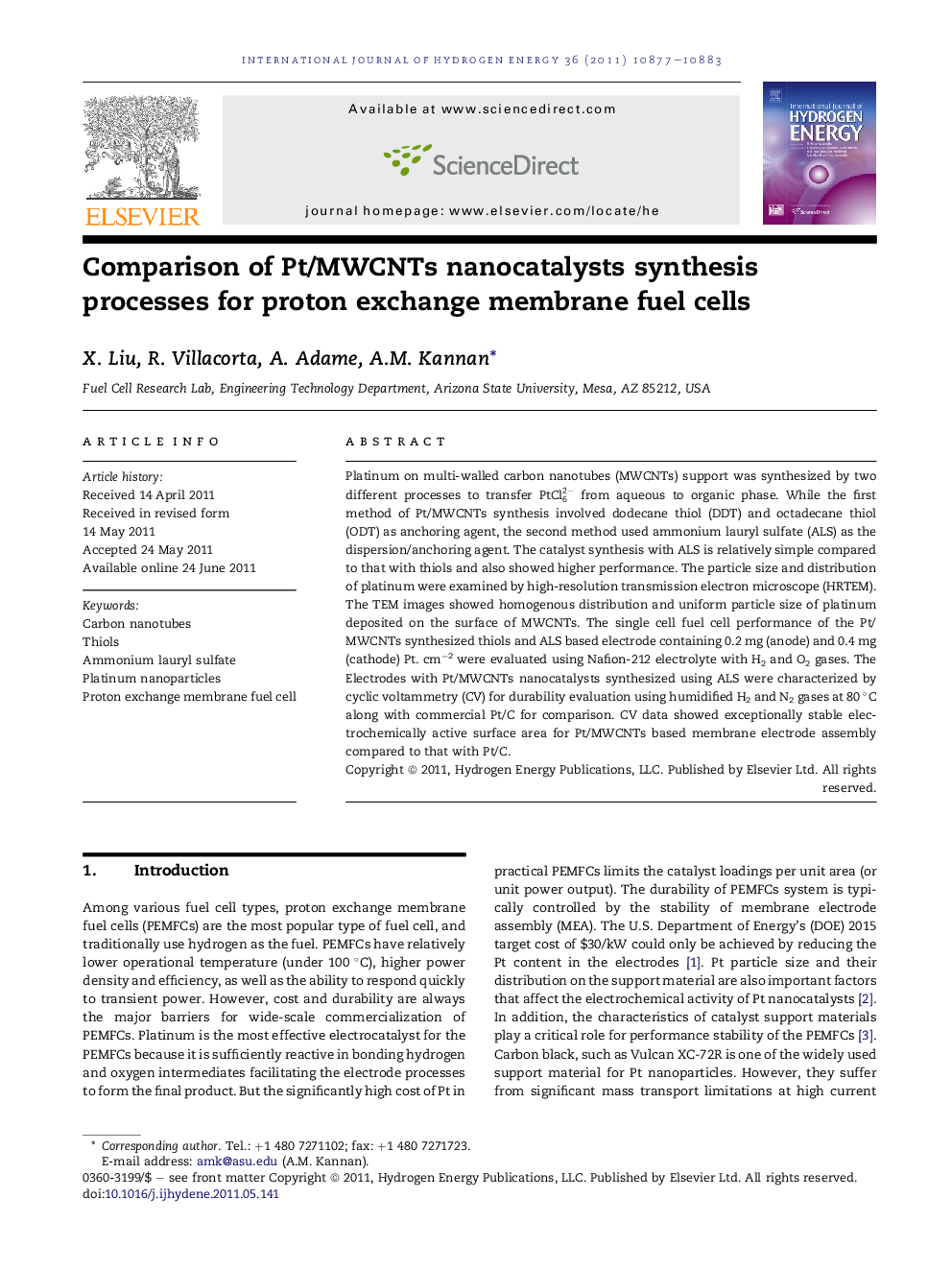| Article ID | Journal | Published Year | Pages | File Type |
|---|---|---|---|---|
| 1277557 | International Journal of Hydrogen Energy | 2011 | 7 Pages |
Platinum on multi-walled carbon nanotubes (MWCNTs) support was synthesized by two different processes to transfer PtCl62− from aqueous to organic phase. While the first method of Pt/MWCNTs synthesis involved dodecane thiol (DDT) and octadecane thiol (ODT) as anchoring agent, the second method used ammonium lauryl sulfate (ALS) as the dispersion/anchoring agent. The catalyst synthesis with ALS is relatively simple compared to that with thiols and also showed higher performance. The particle size and distribution of platinum were examined by high-resolution transmission electron microscope (HRTEM). The TEM images showed homogenous distribution and uniform particle size of platinum deposited on the surface of MWCNTs. The single cell fuel cell performance of the Pt/MWCNTs synthesized thiols and ALS based electrode containing 0.2 mg (anode) and 0.4 mg (cathode) Pt. cm−2 were evaluated using Nafion-212 electrolyte with H2 and O2 gases. The Electrodes with Pt/MWCNTs nanocatalysts synthesized using ALS were characterized by cyclic voltammetry (CV) for durability evaluation using humidified H2 and N2 gases at 80 °C along with commercial Pt/C for comparison. CV data showed exceptionally stable electrochemically active surface area for Pt/MWCNTs based membrane electrode assembly compared to that with Pt/C.
► A simple process of Pt/MWCNTs nanocatalyst synthesis. ► Superior fuel cell performance at 80 °C compared to commercial catalyst. ► Exceptional performance stability compared to commercial catalyst.
